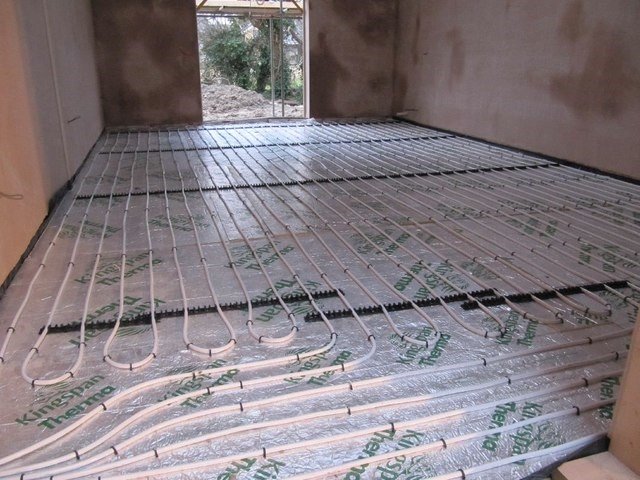
Regardless of how you heat your home, you want it to be efficient, and safe. You also want to be warm but not at all costs – the days of being able to afford monster heating bills every year are long gone.
As well as your bank balance, there is the environment to consider. With some sources not infinite supply – coal, gas and oil – the need to look at efficient forms of heating, as well as those systems that are compatible with alternative sources of energy, is paramount.
The answer has been with us all along; it just needed tweaking and adapting to fit with modern life.
A Roman invention
Underfloor heating is first documented as being used by the Romans, although some think the ancient Egyptians may also have had some kind of crude underfloor heating system.
Circulating hot water through sub-floor piping, as well as the use of fires, the Romans were able to make the bathhouses and spas far more appealing and comfortable.
The kits and systems used today operate in a similar way, although the sub-floor area does not need to be so large nor as elaborate as Roman ideas!
An efficient system
Although underfloor heating is credited as being an efficient heating system in a property, there are many ways that you can gain even more benefits from it. Here we outline three top tips to use underfloor heating efficiently…
Tip 1 – Insulate, insulate, insulate!
The heat radiated by an underfloor heating system, either the wet or dry type, is far gentler than that given off by a roaring open fire or radiator. This doesn’t mean you will be cold; in fact, many people with underfloor heating find it a far more comfortable heat source.
What this does mean is that to gain maximum benefit and efficiency, you need your property insulated to the highest possible standard.
Check;
- The loft insulation is up to current standards
- Consider cavity or solid wall insulation
- All windows and external doors should be the best possible double glazed units your budget can stretch to
- Sub-floor insulation should be included as part of the underfloor heating system installation – this prevents heat being lost to the ground, ensuring as much as possible bounces up into the room or space above
A well-insulated home means that any heating system you have, not just underfloor heating, will not need to work as hard to maintain the desired temperature. By using less energy to heat your home, your heating bill should start to tumble, welcome news as it means more money to do fun things with.
Tip 2 – Underfloor heating controls
Just like a central heating system, underfloor heating has a thermostat that regulates the temperature within the home. In the main, you set this temperature.
The most basic of thermostats operate on time. You tell it when you want the heating to come on and go off, as well as turning a dial to set the temperature.
However, this is not the most efficient way to operate any heating system which is why underfloor heating controls tend to be far more sophisticated and responsive.
Underfloor heating can operate at low temperatures, meaning that your home doesn’t really become cold or chilly. When you want more heat, you tell the system to kick in. With a well-insulated home, this takes no time at all; with a property less well insulated, this can take 20 minutes or more.
Once it has reached the desired temperature, you can tell the system to maintain it or to cool down. With some smart thermostats, with an app on your phone, you can control the heat remotely, asking it to warm the house in time for your return home.
Tip 3 – Economic temperature
Advice regarding the temperature inside your home caries; for example, with babies, small children and the elderly, the temperature needs to be slightly higher, as they can ‘feel’ the cold more.
Current advice is that in a living area or lounge, the temperature should be around 21°, with bedrooms being around 18°c. Most homes, a survey has found, have the thermostat set at a very toasty 23°c.
By turning down your thermostat a notch or two, you could save a fair both of cash on your heating bill every year.
